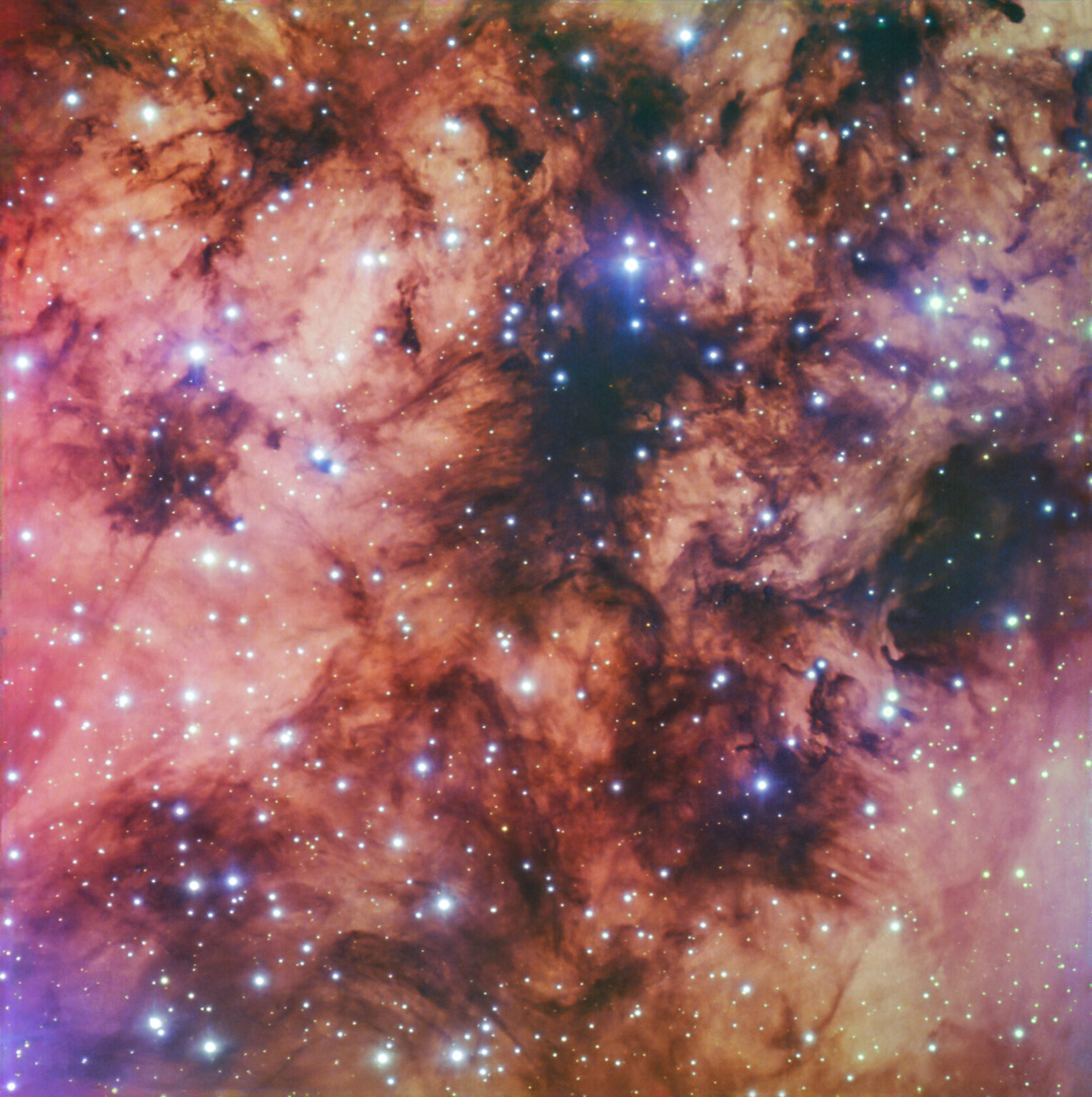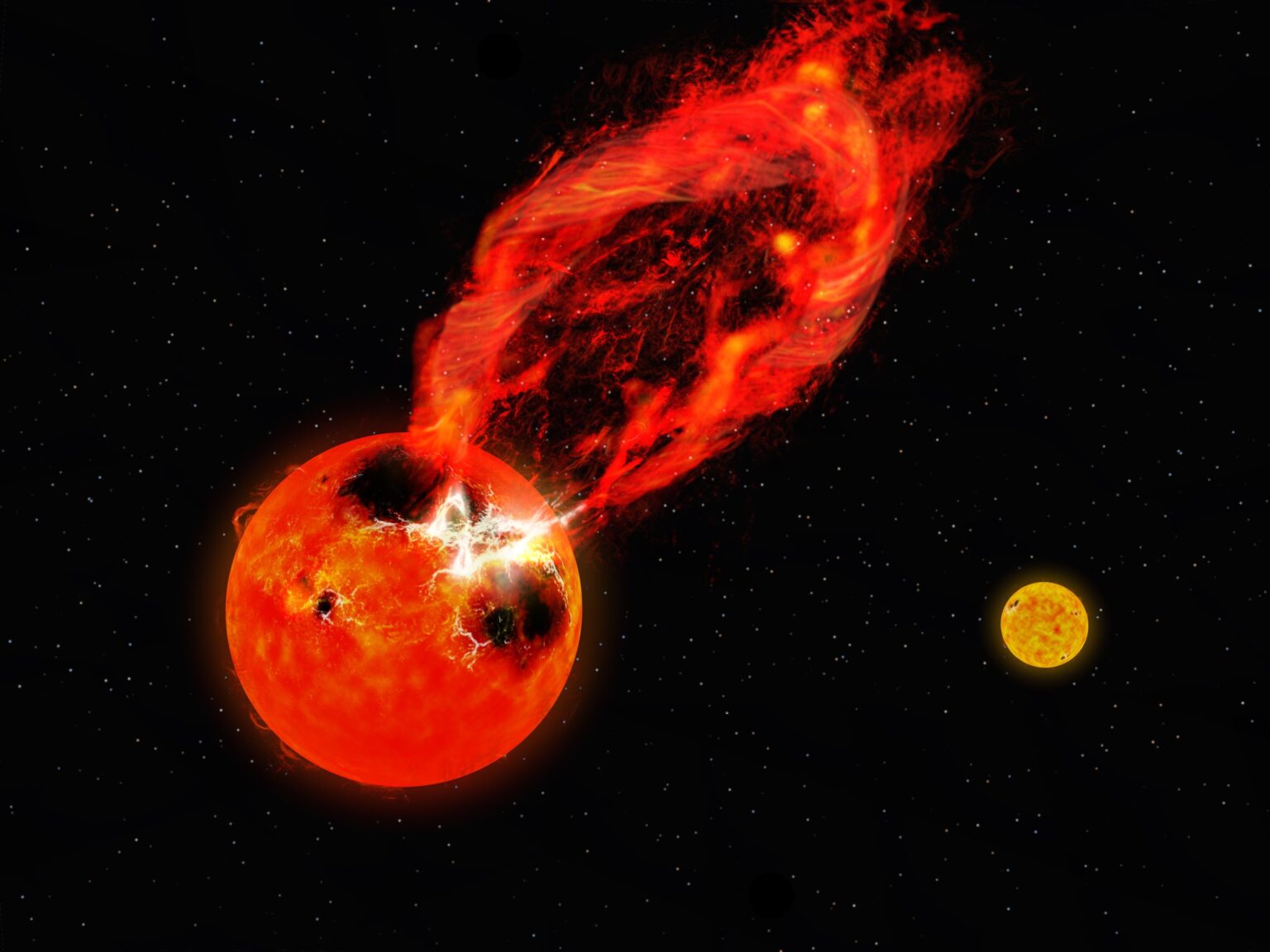Selection of the most interesting space news for the week: Astronomers observed the largest flare in history in a binary star system; Europeans are creating a nuclear rocket for space exploration, and we talk about how real the planets from “Star Wars” are and about the female images of this saga.

“Nothing exists except atoms and empty space; everything else is opinion.”
― Democritus
What will the lunar base of the Artemis project look like
The ultimate goal of the Artemis mission is to build a permanent settlement on the surface of our planet’s moon. This project will need to use not just modern technologies, but developments that no one has done before. Electricity generators, vehicles and habitat will be required.
Communication technologies and energy — a couple of satellites are planned to be placed in orbit so that they can monitor all stages of construction in real time on Earth. Energy will also be received from vertical 18-meter solar panels, because there is water ice at the south pole of the Moon, where the base is planned to be built, and the Sun is often quite low above the horizon.
Vehicles — must have an autonomous mode, that is, be able to move without astronauts. In addition, they will withstand the conditions of a harsh lunar night, when the temperature drops below 170 degrees Celsius for two weeks.
Construction technologies — NASA has signed a deal worth USD 57.2 million with the Texas company Icon, specializing in construction 3D printing. It must develop the technology necessary for the construction of roads, landing strips on the Moon and, finally, housing.
Chinese startup will provide hypersonic vehicles with satellite communications
Chinese startup Galaxy Space has launched six communication satellites into orbit. It plans to use them to provide communication with hypersonic aircraft. The company was founded back in 2016 and initially its main goal was to create a civil communications network for the needs of residents of their country. But China’s recently announced plans to create a national satellite grouping of 13 thousand satellites put an end to these plans. Therefore, Galaxy Space has moved on to another task — providing stable communication of unmanned hypersonic vehicles. Perhaps the Celestial Empire uses this technology to guide cruise missiles of a new generation.
NASA creates a creepy animation comparing the largest black holes in the Universe
This week, NASA released a video demonstrating how huge supermassive black holes can be in the Universe. The smallest of them is the relatively minuscule J1601+3113 black hole in the center of a dwarf galaxy. The NASA release says that although J1601+3113 has 100 thousand solar masses, it is so compact that its shadow is actually smaller than the Sun. Next, the animation unfolds outward, showing different black holes, the size of which exceeds the orbits of the planets of the Solar System, eventually reaching an absolutely huge TON 618, 60 billion times the mass of the Sun. According to NASA, TON 618 is just one of the few extremely distant and incredibly massive black holes that scientists have been able to detect and investigate.
Europeans are developing a nuclear rocket for space exploration
The European Space Agency has attracted a number of scientific organizations to create a nuclear electric rocket engine. It will be much more efficient than the chemical ones that are used now and will be able to work even where there is very little sunlight. The main reason why the last one is increasingly interested in the topic of nuclear rockets is that chemical jet propulsion has approached the limit of its effectiveness. Their specific impulse will not be able to do more than try. Therefore, European engineers are interested in engines using the energy of separation of heavy nuclei, primarily nuclear-based electric propulsion (NEP).
This type of engine uses nuclear energy indirectly. Initially, the source based on the separation reaction creates an electric current, which feeds the main propulsion system, which is one of the variants of an ion or plasma engine.
Astronomers see the destruction of the Earth in the future at the sun-like star
Recently, astronomers saw the horrific sight of an exoplanet being swallowed up by its mother star. This allowed scientists to see what would eventually happen to the Earth when the Sun began to die.
A sun-shaped star located in our galaxy, about 12 thousand light-years away from us, has turned into a red giant – the last stage in the life of a star. As it grows, it expands outward, so that the star has absorbed a planet the size of Jupiter orbiting it. Researchers were able to see this catastrophic event due to the characteristic increase in the brightness of the star. This event is very similar to what will eventually happen to our Sun.
Photo of the week

The staff of the European Southern Observatory (ESO) has published a new spectacular photo of a deep space object. The Gum 10 nebula is located at a distance of 10,400 light-years from Earth in the direction of the constellation Puppis. It is named after its discoverer, Australian astronomer Colin Gama.
The characteristic pink color of the nebula is explained as follows. The powerful ultraviolet radiation of hot blue stars located inside Gum 10 ionizes the surrounding gas clouds, knocking electrons out of their atoms. When these electrons recombine, it results in the emission of light at a certain wavelength. Since interstellar gas clouds are mostly composed of hydrogen, emission nebulae like Gum 10 have a characteristic red color. As for the dark areas, they correspond to dense dust accumulations that block light from background objects.
Interesting figure — eruption velocity 990 km/s

Powerful superflares like the V1355 Orionis flares can have even worse consequences. Their power is enough to destroy any life on the planets closest to the stars.
A team of astronomers led by Shun Inoue from Kyoto University in Japan observed this binary system using the 3.8-meter Seimei telescope and the Transiting Exoplanet Survey Satellite (TESS). They managed to notice the most powerful prominence they had ever seen. The speed of the ejection was at least 990 km/s, which is three times higher than the second cosmic speed of the star. The coronal mass ejection carried trillions of tons of material into space.
Something to read on the weekend

This week, fans of the famous George Lucas saga celebrated Star Wars Day. On this occasion, we decide to talk about the female images of this saga and talk about how real the planets from “Star Wars” are. Recall that this date on May 4 was not chosen by chance, because the famous phrase May the Force be with you, which many fans beat as May the fourth be with you.
Read also: Google has updated pre-war maps of Mariupol, and China is developing its own Starship: News Digest
Follow us on Twitter to get the most interesting space news in time
https://twitter.com/ust_magazine

